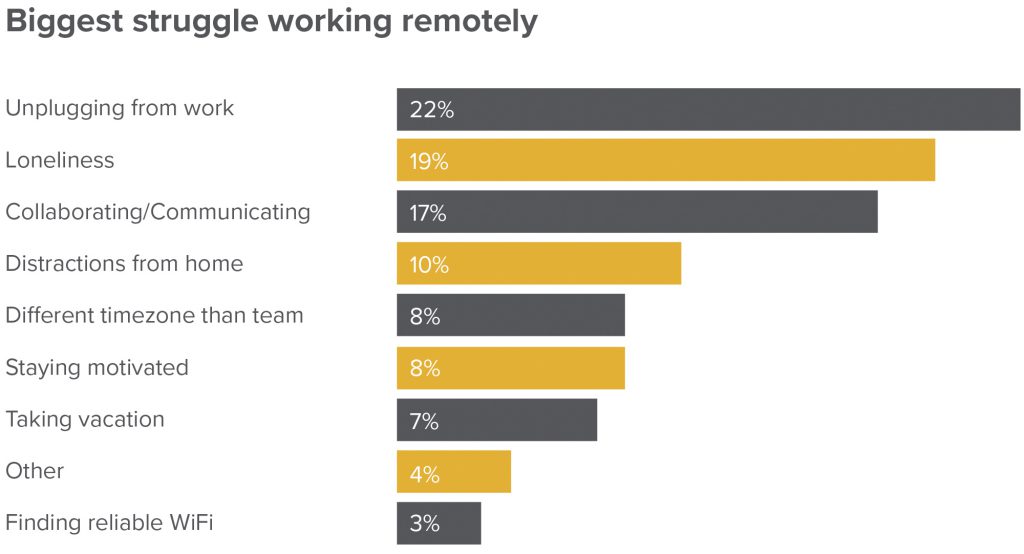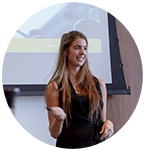
Did you freak out when your company announced you would work from home until further notice? You are not alone.
In this blog, I am going to go through some tips and tricks for working remotely, or for telecommuting, which is one of the fancier terms for working remotely. However, before I go into that, I wanted to give my top 5 reasons to love working from home;
- Save time – both commuting and getting ready. Forget all about crowds and the morning rush hour. All the time saved creates a better work/life balance.
- Custom environment – you are now in control of everything, from music to temperature. This is the time to take advantage of playing whatever music you like and at whatever volume you like! Or no music at all if that’s what rocks your boat.
- Access to your own kitchen – apart from the convenience of course, having access to your own kitchen might even save you money, unless you still have Uber Eats on speed dial that is. Not to mention all the fridge space that now is fully dedicated to you and your snack preferences.
- The clothes – what dress code? People tend to recommend that you still get dressed for work as it can create a sense of going to work, but I beg to differ. Take the opportunity to wear something comfortable if that is what you want. I sure do!
- No office distractions – there are no distractions from colleagues asking questions or spontaneous brainstorming sessions. Even though I think we all miss that from time to time it gives us a chance to focus.
A study showed that “home working led to a 13% performance increase, of which 9.2% was from working more minutes per shift (fewer breaks and sick days) and 3.3% from more calls per minute (attributed to a quieter and more convenient working environment)”.
To counterbalance all the lovey-dovey, I asked everyone at Knowledge E what their biggest struggle working remotely was and here are the results:

Most of us, more than 1/5, thought that collaborating/communicating was the biggest struggle with working remotely. In shared second place came loneliness together with other at 16% respectively. The reason for choosing other was mostly due to ergonomics, the absence of a good chair to be more specific.
It is interesting to compare our mini-study with another study done where more than 1/5 ranked unplugging from work as the biggest struggle, this only ranked 4th in our company poll together with distractions from home. Commonalities between the two studies were that loneliness came in second place and the percentages for staying motivated were very similar with 8% in the original study and 9% in our survey.
Here are all the results from the original study:

With those numbers out of the way, let us begin!
- Set up the right conditions
Without the right conditions, how are you supposed to get the most out of the situation at hand? You need to make sure that people understand that you are not available instantly just because you are working from home, you are just that, working from home. You are still working on all your tasks, attending online meetings, eating lunch and so on. The same goes for you having that same understanding towards colleagues or other remote working people. Achieving this understanding can for example be done by using software to its full extent, make sure you add your lunch, breaks and even ‘focus time’ to your calendar and share your calendar with everyone so they are aware. If you do not want them to see the specifics, there is a setting for that too. If you are using slack or any other instant messaging tool, make sure it is synced with your calendar so people can easily see when you are busy.
- Create routines
This is for your body and mind to know when your workday is starting and when it is ending. A ‘start the day routine’ can be making a cup of coffee or do the planning for the day. An ‘end the day routine’ can be a simple thing like putting your laptop back in the laptop case. Other things that can help create that work routine is to sit in at a certain place when you are working and make that place as office-like as possible, spread out your calculator, post-its or whatever items you usually use.
- Look at the ergonomics
This is especially important if you are in this remote working game for the long run. Make sure you are comfortable and that you have got your laptop placed at eye-level height for example. Be creative with solutions, if your laptop is currently too low, you can stack it up by using books. If you are planning on working from home indefinitely, you might want to invest in a proper chair. Your back will thank you!
- Boundaries
This next recommendation is not the most fun one to carry out, but oh so important – you need to set clear boundaries. This goes for your spouse, kids, pets, roommates or whoever is around you at home when you are working to avoid being interrupted. Let them know when and how it is appropriate to communicate with you, if they can still play music and so on. I think we have all seen that viral video of the live streaming from BBC news where the man’s children all of a sudden appear in his home office with his wife close thereafter literally dragging the children out again. It is hilarious to watch indeed but I am glad I was not in his shoes.
- Cleaning
Since we are on the topic of not so fun things, let us talk about cleaning. While most offices have dedicated personnel for cleaning, this may not be the case at home. This is something that you should add to your to-do list. Keeping your home office clean helps you stay focused, get organised, and be productive.
- Planning
Now when you have the right conditions to work, what should you begin with? Well, planning of course!
Plan your day in advance, even if you usually do not, and tick off the items as you go. Bigger tasks can be added to a weekly plan. You can plan at the end of the workday for the next day, or plan for the same day while having your morning coffee, or whenever works best for you. The day-planning could even be one of your routine items that signals that your workday has either started or ended. You may find that you sleep better without the stress of planning in the back of your mind. Time spent alone is better if structured. In your planning, consider the following;
- No matter how tempting it is to do the most fun or interesting tasks first, do yourself a favor and be strict about completing the highest priority tasks first.
- Planning your day around your own natural cycles means doing the hardest tasks when you have the most energy throughout the day, this will vary from person to person (Pro tip: look up Einstein window). Note the difference between highest priority and hardest tasks.
- Plan not just what to work on and when, but also when you will take breaks and when you will reward yourself so you have something to look forward to. Just make sure you also decide how long the breaks will last so you do not get distracted and lose track of time. A reward does not have to be something extravagant, it can just be an apple or a cup of tea.
- Breaks
If you followed the previous step, then you will already have planned breaks for yourself throughout the day, make sure you get up from your seat during those breaks. I know that in Dubai, not everyone has windows that open or even a balcony, but if you do, make sure you make use of it to get some fresh air.
- Virtual socialising
If you feel lonely, your breaks are a golden opportunity to socialise, call a friend or a colleague who is also stuck at home. During these coronavirus times especially, they might feel lonely and isolated too, and would like to hear from you, even briefly. Have an e-coffee or even plan an e-lunch!
- Keep healthy
Eat healthy to keep your energy up, pretend that you are at the office with no snack cabinet (horrible thought I know)! Also, by preparing your snacks and drinks during your breaks, you avoid interruptions later and can stick to your planned schedule. I mentioned routines earlier, another good routine to have is to replicate the office environment in terms of lunch hour, eat lunch around the same time every day.
All of these activities will help you reenergise, get your blood flowing, and make sure you are ready to tackle what’s next in your schedule.
- Master the art of virtual communication
When you are working from home you will still need to communicate with people, in this day and age, I am sure you do it daily. For online communication, apart from being mindful with how you phrase things given that the recipient cannot see your body language or maybe not even your facial expressions, there are a few other things you can do.
If you are talking to someone about something specific, make sure you share screens to make sure you are on the same page (pun-unintended).
Create groups on whatever software you use for messaging (make sure you have one) for collaborative discussions about work or non-work-related things. Hopping on a social video call instead of messaging from time to time is not a bad idea either. In general, it is important to make time to speak about non-work-related things, if you are scheduling a meeting, add an extra 5 minutes or so to make sure there is time for it.
- Never forget your goals
Many people underestimate the importance of goals. Things like ‘I will be productive today’ is not a goal. ‘I will make five calls to clients today’ or ‘I will finish the monthly report’ on the other hand, are goals. Start making both short-term and long-term goals which are both clear and concise. Another helpful tip is to write them down on a piece of paper, maybe a post-it and look at them once or twice a day. This will serve as a reminder to work on what matters and help you to not stray from the path.
- Time to spare?
Congrats, say no more! Then you can stay smart with online learning for example. There are a ton of online learning platforms today and you can even find things for free on YouTube, or you can dive into Zendy’s collection of over 120,000 scientific publications with more than 4,000 articles on the topic ‘working remotely’ alone!
I hope you feel a little more equipped taking on working from home now and a lot more excited about it, see you online!

By Therese Bill, Head of Operations – Knowledge E
To explore how Knowledge E can support your institution during the remote working season, click here to get in touch. The KnE learning team provide custom online teaching masterclasses, learning tools, and other support services.
Sources:



